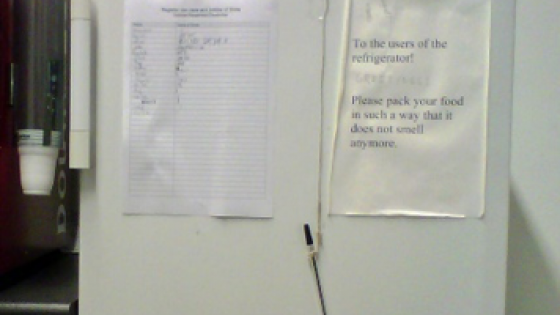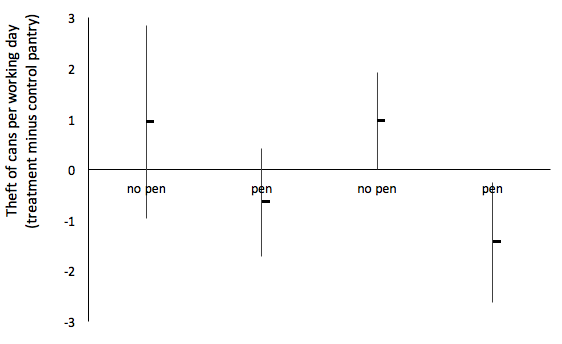“The line between good and evil is permeable. Any of us can move across it.... I argue that we all have the capacity for love and evil – to be Mother Theresa, to be Hitler or Saddam Hussein. It's the situation that brings that out." Philip Zimbardo (2004)
A considerable part of the (behavioural) economics literature seeks to explain behaviour through individual dispositions. Attitudes towards risk are supposed to drive investment decisions, for instance. Contrary to this perspective, there exists a literature stressing that situational factors are the prime determinant of behaviour – individual dispositions play only a secondary role. See the above quote from Philip Zimbardo, famous for the Stanford Prison Experiment (see Freakonomics 2012).
From the situational perspective, it makes more sense to study the interaction between agents and environmental factors than spending much time trying to elicit or deduce personal traits. For instance, recent ‘situational work’ by Bordalo et al. (2012) focuses on salience – that which happens to attract one’s attention in a particular situation. They pose that a decision-maker is risk-seeking when the upside is salient and risk-averse when the downside is salient. So much for individual risk attitudes!
Economists at the pantry
What better proof of the relevance of the situational perspective than an experiment with the very same colleagues who study things like ‘higher order risk attitudes’ and ‘other-regarding preferences’. The pantry at our Economics Department provided a great opportunity.
In the pantry is a refrigerator stacked with soda cans. On the door of the refrigerator is a piece of paper on which each department member is supposed to keep tally of their can consumption (Figure 1). There is no supervision – every two months the department’s secretaries simply bill every department member for what is noted on the one-pager. In other words, this is an honour-based commerce scheme, similar to the ‘bagel man’ in Dubner and Levitt (2004) and the increasingly popular ‘self-checkouts’ in department stores (see also Haan and Kooreman 2002).
Figure 1 Refrigerator at the pantry
The degree of honesty depends on how the cost of being dishonest (fear of loss of reputation, cognitive dissonance) compares to the benefits of being dishonest (no effort of tallying, plus not having to pay 60 cents per can). This is not necessarily a low-stake decision – even when one is able to find some excuse for what is essentially stealing from the department (“the department is actually better off when I do not spend time looking for a pen”, etc.), being known among colleagues as “the guy who cheated on something as cheap as a soda can” may hurt.
A situational factor I played with was the pen hanging down from the refrigerator (see Figure 1). This pen made keeping tally easy. In the treatment condition, I removed the pen. The effort of bringing or finding a pen increases the cost of being honest. To avoid any suspicions of being dishonest myself, I completely outsourced the data collection to the secretaries. For two months, on 9am Tuesday, Wednesday and Thursday, they noted the total sum of the tally and counted the number of remaining cans in the refrigerator. They also noted when they refilled the refrigerator. Another advantage was that the odd department member who may be in early would not suspect anything – it is completely common to see one of the secretaries doing things in the pantry. Obviously, the secretaries were sworn to secrecy.
I randomly switched between periods with and without the pen. The experiment started with nine days of no pen, followed by ten days with pen, then 28 days with no pen, and concluded with nine days with pen. I considered one billing period of two months long enough. I was also concerned that word may get out if the experiment ran for too long. The odd student taking a can did not affect the experiment. Given that they are unknown passers-by, they would never note their consumption on the one-pager anyway, pen or no pen.
I kept the second pantry at the department with a similar refrigerator as a control. I did not have much choice – in that pantry a couple of shelves with office supplies including pens were placed right next to the refrigerator.
Theft was defined as the difference between actual consumption and the tally from one day to the other. The average honesty rate in the control condition was 93%. Total actual consumption over the two months was equal to 264 cans.
Results
What happened during the days that I took the pen away? Figure 2 shows the estimated difference in the number of stolen cans per working day between the ‘experimental pantry’ and the ‘control pantry’ for each of the ‘pen’ or ‘no pen’ periods. The figure also shows the 95% confidence intervals.
Figure 2 Difference in theft rate between experimental pantry and control pantry
In the first period, the theft rate in the experimental pantry without pen is higher than the theft rate in the control pantry. Obviously, this could also be due to other factors that differ between the two pantries. This is why I switch back and forth between the ‘pen’ and ‘no pen’ conditions a couple of times. As soon as the pen is put back in place, the theft rate in the experimental pantry sharply drops relative to the control pantry. Once I take away the pen again, the difference in the theft rate jumps back to the level of the first period of no pen. Finally, when I put the pen back a second time, again the theft rate in the experimental pantry drops sharply relative to the control pantry. A regression including day-fixed effects shows that I can reject the hypothesis that this pattern is due to chance rather than due to the pen being present or not (with a significance level of 99%). On average, when the pen is taken away, theft goes up by 1.3 cans per working day.
If department members exposed to the treatment simply delay tallying their consumption until they see a pen again, then the above average is an overestimate of the treatment effect. There may be some truth to that – immediately after the end of the second, longer period with no pen, I noticed that the tally briefly exceeded actual consumption. If I allow for a catch-up effect in the days after the pen was put back, then the treatment effect is indeed somewhat smaller. The estimated average treatment effect on theft is now 1 rather than 1.3 cans per working day (and similarly statistically significant). Clearly, the catch-up does not compensate for the thefts during the treatment condition. Apparently, if department members intended to set the record straight at a later time, then they usually forgot about this intention by the time the pen was back in place again.
This small-scale experiment shows that my colleagues’ honesty rate greatly depends on something as simple as a pen hanging down from the refrigerator. The theft rate went up from a mere one out of 14 cans to no less than one out of three cans once the pen was taken away. This amounted to a 370% increase in the theft rate.
Discussion
These results are further proof that situational factors have a strong effect on behaviour. To reiterate, unless one believes that a department member’s self-reputation and reputation among colleagues are of little import, this experiment is of broader significance than the 60 cents of the soda can. This insight into what drives decision-making has great practical implications when we wish to change behaviour – a small change in the environment in which agents operate is probably all we need.
That the situation matters a great deal is no news to many social science departments, including social psychology and criminology (Clarke and Mayhew 1988), but it does not seem to dawn on all economists. In social psychology, the tendency to ascribe too much to people’s preferences is known as the fundamental attribution error. Nisbett (2015) puts it as follows: “The situations we find ourselves in (…) determine our behaviour far more than we realise. People’s dispositions on the other hand – their distinctive traits, attitudes, abilities, and tastes – are much less influential than we assume. So we make mistakes in assessing why it is that people – including ourselves – (…) behave in particular ways”.
The experiment does not prove that individual dispositions do not matter at all; there may well be some treatment heterogeneity. In common language, some of my colleagues may always be honest, pen or no pen. I do know that the effect of removing the pen is not driven by one or only a few colleagues, however. The number of stolen cans greatly exceeded what a typical person consumes. This suggests that treatment heterogeneity, if present, was limited.
1-0 for the situational perspective.
Author’s note: I would like to thank Nicole van de Ven for excellent research assistance.
References
Bordalo, P, N Gennaioli and A Shleifer (2012), Salience theory of choice under risk, Quarterly Journal of Economics, 127 (3), 1243-1285
Clarke, R, and P Mayhew (1988), The British Gas Suicide Story and Its Criminological Implications, Crime and Justice, 10, 79-116
Dubner, S, and S Levitt (2004), What the bagel man saw, The New York Times, June 6
Freakonomics (2012), “Fear they nature: Full transcript”, podcast, 14 September
Haan, M, and P Kooreman (2002), Free riding and the provision of candy bars, Journal of Public Economics, 83, 277-291
Nisbett, R (2015), Mindware, Farrar, Straus and Giroux, New York
Zimbardo, P (2004), Address, American Psychological Association’s Annual Convention, covered in M Dittmann, Monitor on Psychology, 35 (9), 68





